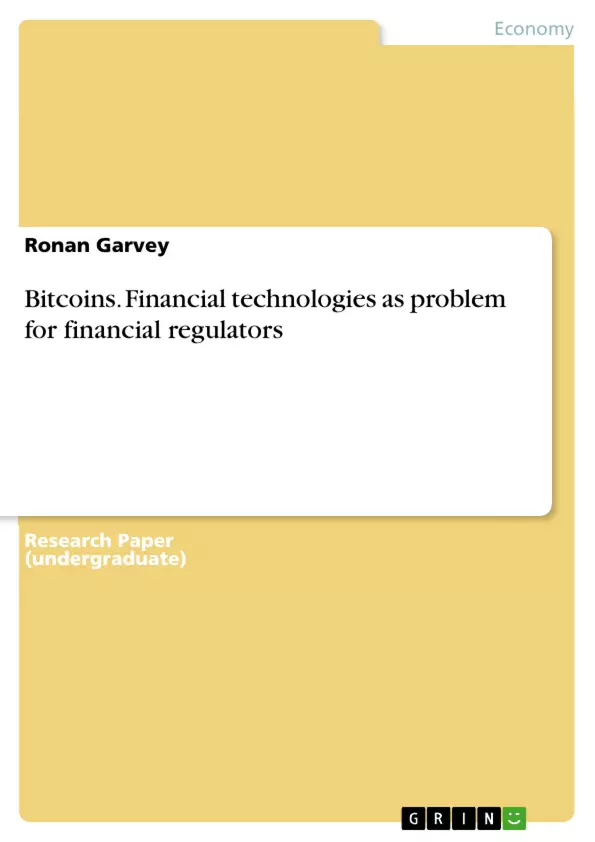Through this essay I wish to show how the conflicting legal status of cryptocurrency in the world’s major financial hubs serves to negate its global application. I will then focus primarily on the United States in establishing its applicability to the existing financial safeguards in place.
Cryptocurrency is a financial panacea for individualists, a mechanism to evade control and bureaucracy, promoting autonomy and self-governance. These themes seemingly detach from the established policies of our current financial regulation. Conversely, I argue that the principles underpinning cryptocurrency allow it to be encapsulated within existing regulatory frameworks. That virtual currency intermediary’s act as a nexus between its global application and regulatory control, allowing current financial legislation to be imposed upon it, with minor alterations.
Inhaltsverzeichnis (Table of Contents)
- Introduction
- Underlying Blockchain Technology
- Conflicting Legal Status of Cryptocurrency
- United States
- United Kingdom
- East Asia
- Applying Existing Legislation to Virtual Currency
- Exchanges acting as Money Transmitters & Intermediaries
- Money Laundering & Criminality Aspects of Crypto
- Application of Securities Law
- Eternal Resource Asymmetry
- Conclusion
Zielsetzung und Themenschwerpunkte (Objectives and Key Themes)
This essay aims to critically discuss the assertion that financial technologies pose a significant challenge for financial regulators, focusing on the specific example of cryptocurrency. It explores the conflicting legal status of cryptocurrency in various jurisdictions and analyzes the potential for incorporating this technology into existing regulatory frameworks. The essay argues that while cryptocurrency's decentralized nature presents challenges, its characteristics can be addressed within established financial regulations.
- The conflicting legal status of cryptocurrency across different countries
- The potential for applying existing financial regulations to cryptocurrency
- The role of intermediaries and exchanges in regulating cryptocurrency
- The challenges of integrating cryptocurrency into traditional financial systems
- The impact of cryptocurrency on existing regulatory frameworks
Zusammenfassung der Kapitel (Chapter Summaries)
- Introduction: This chapter introduces the topic of financial technologies and their impact on financial regulation, focusing on the decentralized nature of cryptocurrency and its implications for traditional regulatory frameworks.
- Underlying Blockchain Technology: This chapter explains the fundamental technology behind cryptocurrency – the blockchain. It highlights the immutability of transactions, the absence of a central authority, and the potential for decentralized ownership verification and title transfers.
- Conflicting Legal Status of Cryptocurrency: This chapter examines the varied legal statuses of cryptocurrency in major financial hubs, comparing the US, UK, and East Asian approaches. It discusses the classification of cryptocurrency as property, currency, and securities in different jurisdictions.
- Applying Existing Legislation to Virtual Currency: This chapter explores the possibility of integrating cryptocurrency into existing regulatory frameworks. It considers the applicability of money-transmitter laws, anti-money laundering legislation, and federal securities laws to virtual currency.
Schlüsselwörter (Keywords)
This essay focuses on the key concepts of financial technology, cryptocurrency, blockchain, regulation, legal status, decentralized finance, money laundering, securities law, and regulatory frameworks.
- Quote paper
- Ronan Garvey (Author), 2015, Bitcoins. Financial technologies as problem for financial regulators, Munich, GRIN Verlag, https://www.grin.com/document/544538



